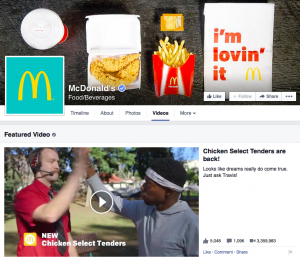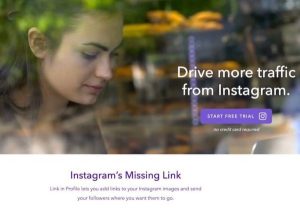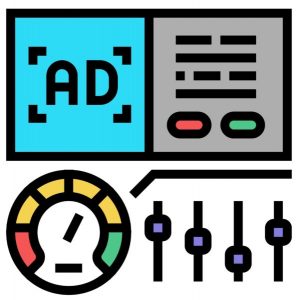Outbound prospecting through email is not an easy task. However, you read blog post after blog post that this and that company are raking in leads through it. You wonder: What am I doing wrong?
For starters, you’re correct in putting thought over this problem. Email is one of the most effective ways to fill up your pipeline. MarketingSherpa reported that email is 40 times more effective at getting new customers than social media.
But here you are. You’ve written perfect emails with complete rundowns of your product’s offerings and features–but you still get sad response rates. You’ve tried your hardest to show what your product can deliver and you just don’t understand why they won’t want to even schedule a call with you.
Well, that assumption right there is a big issue.
Remember, you are a stranger to these recipients. There’s a big chance that they haven’t even heard of your company and how awesome it is.
Here’s the key: If you want a response, you need to connect with your audience. Sync with their emotions, and tap on their fears and desires.
Be considerate of your prospects’ time. Tell them about stuff they care about. Then, you will get a better chance at getting a response.
Sending cold emails is tough and can be draining if you’re not getting results. Here are some tips that should get you on the right track to getting responses on the messages you send.
Start with a quality list
The results you get from your cold emails are not solely reliant on the quality of emails you send. Your lead list is just as important, if not more crucial. The quality of the list you built can spell delight or disaster to you and your company even before you start sending emails. It doesn’t matter if it’s a list of 100 prospects or 10000.
Low-quality lead lists waste your time and energy, resulting in countless mail delivery failure notifications. Checking your email tracking dashboard will make you anxious. If this keeps on, it can affect your other email campaigns because it might result in getting your IP address (yes, that includes all emails from your office) blacklisted and gives you a lower chance of getting your emails to recipients’ inboxes (you’ll go straight to spam or promotions–what’s worse?).
Another downside of using a broad, untargeted, and low-quality lead list means that your email copy will be unnecessarily generic. You want to appeal to as many people in this list, right? And why would you risk mentioning industry-specific terms when it might turn-off some of the prospects on the list? Well, there’s your problem. Using the same messaging for a CTO and a VP of Sales might not fly smoothly. The two have differing concerns and priorities. There goes another ignored email or two.
When it comes to lead lists, quality over quantity is king. You spend less time worrying and more time actually sending emails that have better chances of getting responded to.
So, how do you even begin building a list of highly-targeted prospects?
Start with building buyer personas. Do this with the rest of your marketing team and consulting other departments. Who are your ideal customers? Who needs your products most? What industry does your product appeal to the most? Create a couple of segments and build up a list that fulfills the criteria of that segment: industry, job role, company size, location, and so on. It’s best to group together leads that share the same potential use case for your product.
Keep emails short and straight-forward
Many SDRs and email marketing reps are sending emails to the same prospects as you are. How do you set yourself apart?
There is no single way to stand out from the crowd. However, the best thing you can do is optimize your email so that your prospects get what you want you to say in a couple of seconds. Grab their attention quickly. The purpose of your email has to be easily understood within moments of opening the email.
Get this: 69% of email recipients report email as Spam based solely on the subject line.
Many pros make the mistake of sending a jam-packed email with all the features listed in bullet form. Not only is this salesy, it also shows laziness. Prospects like knowing that you took the time to research them before sending them a messaging.
Focus on a single, particular benefit for each email you send. This keeps the messaging disciplined and targeted. Your whole email must point to this single benefit from subject line to your ask or Call to Action.
The key here is to understand the difference between benefits and features. Features are characteristics or functionalities of your product. Benefits communicate the business value of your product to your prospect.
Example:
Feature is: Click to dial. Benefit is: Make more calls and increase selling time.
Benefits help your prospect visualize the impact of your product on their business. It connects with their desire to perform better.
Use social proof
So, your prospect receives hundreds of prospecting emails each month. There’s a lot of noise to wade through in their inbox. You’re pretty sure that given the chance to partner up and try your product, they’ll be a quick convert. However, if you took a hard look at the emails you send out, does it scream credibility or spam?
Remember, you’re a stranger. The goal is to move away from that stranger zone and into that special place where prospects actually give a thought to what you wrote.
You need to establish credibility using social proof. What is social proof? Simply put, it’s letting your prospect know you’re a reliable company without telling them so.
Instead of saying, we work with Fortune 500 companies, why not tell them about specifics? How would cutting down your reps’ non-selling time to 10% like we did for Company X impact your business?
If you go straight to bragging about all your amazing accounts, as if they’d be interested in working with you just because you’re a Microsoft supplier, prospects will think that you are interested in you, not them.
Engage them in meaningful discussion that involves something that will benefit them. Don’t waste their time with information that doesn’t help them in any way. You will get better chances at getting an appointment or a response.
Outbound prospecting is an integral part of a company focused on continuous growth. Apply these tips and see your email efforts get better returns.
For more prospecting and sales tips, check out our free ebook 21 Tips Seasoned Sales Reps Won’t Tell You.
Business & Finance Articles on Business 2 Community(130)







